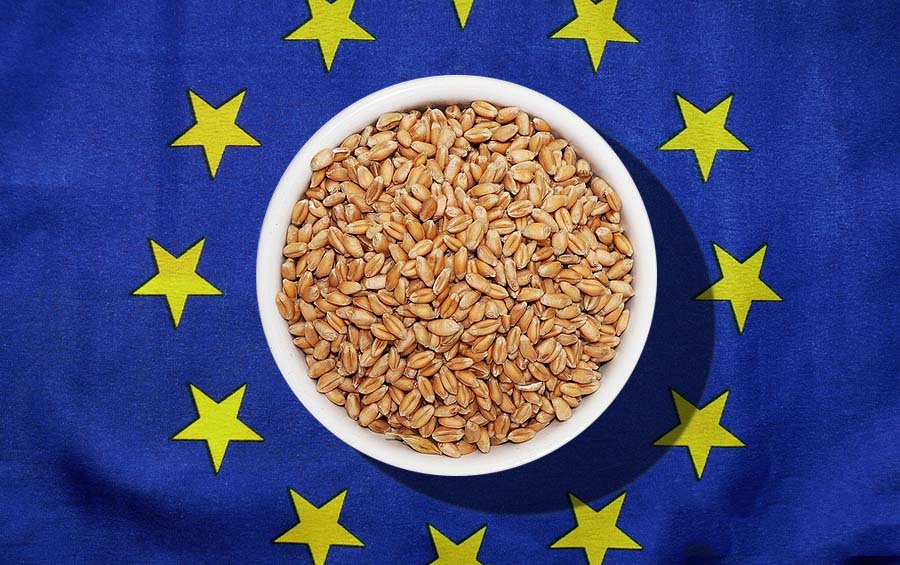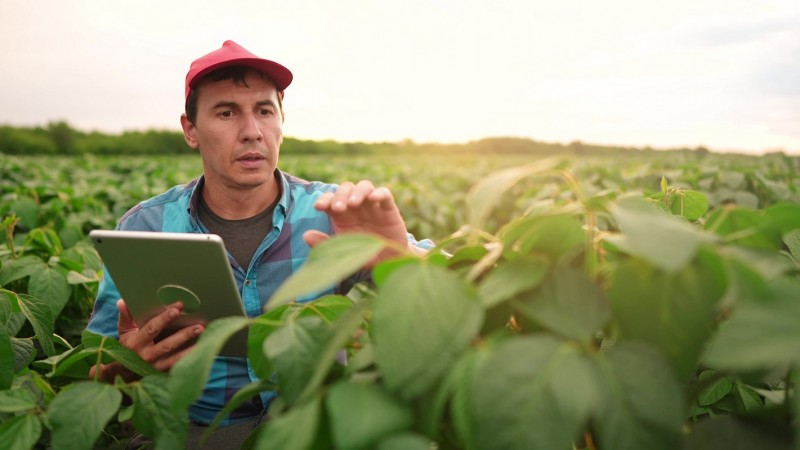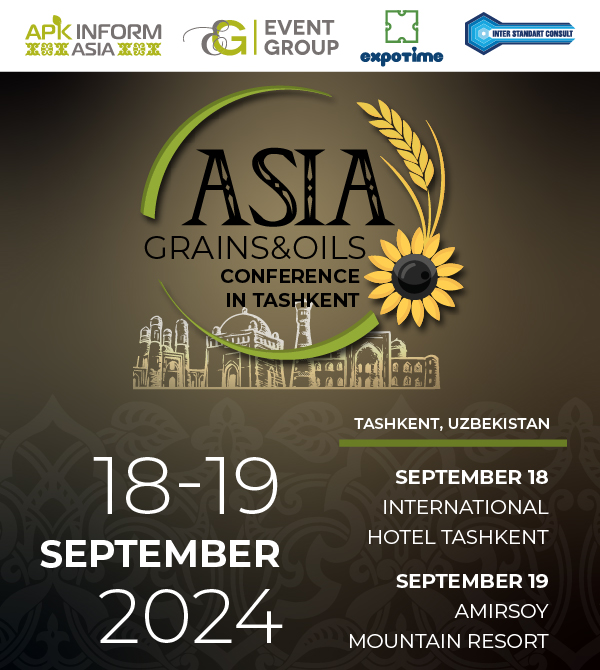Agri exports, breakdown by commodity, August 1-15, 2024 to July 1-15, 2024
- 1265 K mt of wheat (+65% compared to 15 days of July, 2024);
- 445 K mt of corn (43% lower compared to July 1-15, 2024)
- 272 K mt of barley (-6%);
- 408 K mt rapeseed (+800%);
- 145 K mt of all meals (+24%);
- 101 K mt of sunflower oil (-51%).
The share of total agricultural exports through the ports of Greater Odesa increased to 79% in August, which is the highest in 2024. The trend of reorientation of grain flows away from the Danube region and the Romanian port of Constanta continues in 2024/25.
In Jan-June 2024, Ukrainian grain exports through the Romanian port of Constanta decreased by almost half down to about 4.24 M mt. In July 380 K mt of Ukrainian grain were shipped from Constanta.
Some companies like Nibulon continue to use the small ports of the Danube river despite the more expensive logistics than in the ports of Odesa. Currently, half of Nibulon’s shipments go through the Black Sea and half through the Danube, where export costs are $6-7 per ton higher.
Full version of the article is available to subscribers of ‘BLACK SEA & DANUBE GRAIN’ Weekly Report by UkrAgroConsult.


According to the EC forecast, the EU grain production in MY 2024/25 will decrease compared to the previous season from 269.9 to 264.5 million tons, including soft wheat – from 125 million tons to 4-year low of 116.1 million tons (120.8 million tons in the previous forecast).
Аorecast of soft wheat exports from the EU in MY 2024/25 is lowered from 32 to 26 mln tonnes (35.1 mln tonnes in MY 2023/24) compared to July estimates.
Recently, other agencies have also lowered their forecasts for EU soft wheat production and exports due to worse-than-expected yields in France and Germany, where it rained for a long time, and in the eastern regions of the EU, which suffered from drought.
European Commission experts also lowered the forecast of barley production in 2024/25 MY from 52.7 to 51.3 mln tonnes (47.5 mln tonnes in MY 2023/24) and corn production from 62.9 to 61.65 mln tonnes (62.7 mln tonnes). The corn harvest will decrease the most in Romania, which used to compete with France for the position of the main corn producer in the EU, and this year was severely affected by the heat.
Yields nearly 50% down
Harvesting is underway in seven provinces (oblasts) in Ukraine. So far 51,7000 mt have been harvested on 46,700 ha meaning that the harvest is not even 1% complete. Average yields stand at 1.09 mt/ha. Although this is better than last week, the value is a far cry from the 1.93 mt/ha recorded at the start of the 2023 campaign. The USDA estimates this year's production in Ukraine at 13.5 million mt, 13% lower than last year's 15.5 million mt. Local processors are, nevertheless, calling for lower prices as business cannot pay off at the current...


BRUSSELS. This year the quality of the wheat harvested in France is exceptionally bad. Bulgaria’s corn exports have come to a near standstill due to drought. This is also an issue for sowing soybeans in Brazil and the reason why winter rapeseed sowing has been delayed in Ukraine.
Bad wheat quality in France
After an initial decline at the start of the week wheat quotations have now risen again. The bad quality of the wheat in France is, however, weighing on the market. According to FranceAgriMer as little as 26% of grain weight exceeds 76 kg/hl, whereas the average is 76%. In addition, only 74% of the crop has a protein content above 11% as compared with the five-year moving average of 85%. In Germany, the Federal Ministry of Food and Agriculture (BMEL) has issued a preliminary crop estimate of 18 million mt for wheat.
Over the past two sessions, October Brent crude oil futures rose 4% to $79 per barrel (down 1.6% for the month). Expectations of an open attack on Israel increased again, increasing speculative demand for oil.
December soybean futures in Chicago were up 4.4% for the week at $890 a tonne, partially offsetting a 6.8% drop the previous week and down 3.5% overall for the month.
October palm oil futures on Bursa Malaysia rose 5.1% for the week, the biggest weekly gain since mid-June 2023, to 3,869 ringgits per tonne, or $885 per tonne.
The rise in prices did little to curb the further decline in palm oil exports from Malaysia for the first 20 days of August by 16.7-18.4% (according to surveyors Societe Generale de Surveillance (SGS), Intertek Testing Services and AmSpec Agri Malaysia).


Amid rising oil prices, October palm oil futures on Bursa Malaysia rose 2.4% for the week to RM3,920/t or $906.8/t (+6% for two weeks), despite falling export rates in August. According to surveyors Societe Generale de Surveillance (SGS), Intertek Testing Services and AmSpec Agri Malaysia, for August 1-25, Malaysia reduced palm oil exports by 14.1-14.9%.
December soybean oil futures in Chicago for the week rose by 8.2% to $930/t, fully reversing the monthly decline.
The sharp increase in prices is due not only to the increase in the price of oil, but also to rumors about the US's intention to limit the import of used vegetable oil (UCO).
According to Trading Economics, the average price of sunflower oil delivered to buyers during the week increased by 2.3% to $928/t, but the demand prices for Ukrainian sunflower oil from EU buyers remained at €860-880/t or 930 -$970/t DAP Poland, Bulgaria and Italy.
APK-Inform Asia (Kazakhstan) in partnership with Inter Standard Consult (Uzbekistan) and Expo Time (Kazakhstan) invite you to participate in the annual international conference Asia Grains & Oils Conference in Tashkent 2024.
September 18-19
Venue
- September 18 - International Hotel Tashkent, conference hall "Amir Temur"
- Tashkent, Amir Temur Avenue, 107A
- September 19 - Amirsoy Mountain Resort
- Tashkent region, Bostonlik district, Chimgan territory
The event will be held with the support of the Association of Oil and Fat Enterprises of the Republic of Uzbekistan "Uzyogmoysanoat".
For the fourth consecutive year, in September, representatives of the grain and oilseed markets of Uzbekistan will meet in Tashkent with existing and potential partners to discuss the terms of work and cooperation in the new 2024/25 MY.


Thus, wheat has been harvested on the area of almost 1.3 million hectares, 2.2 million tonnes have been threshed at a yield of 17.2 centners per hectare.
Barley has been harvested on 1.1 million hectares, 1.1 million tonnes of grain has been threshed at a yield of 17.3 c/ha.Oats were harvested from 36.1 thousand hectares, 57 thousand tonnes were threshed at a yield of 15.8 c/ha.
Oilseeds were harvested from 13.5 thousand hectares, with an average yield of 11.5 c/ha, 15.5 thousand tonnes were threshed.